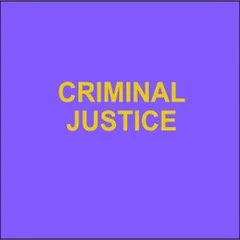By Jay Gormley, Gabrielle Watson, Gavin Dingwall, Jade Mouton, Jonathan Bild and Julian Roberts
Firearms offences are statistically rare yet in light of their potential for harm cause considerable public concern. The offences vary greatly in terms of their nature and possible sentences. As a result, the sentencing exercise is often complex. Courts must weigh the harm caused, intended, or which was reasonably foreseeable, as well as the culpability of the individual offender. Quantifying the harm caused can be particularly challenging where a firearms offence does not have an identifiable victim as firearms offences are inherently potentially harmful. An additional complexity arises in a small number of serious gun crimes which carry a mandatory minimum sentence. When sentencing these offences, the court must also consider whether exceptional circumstances may justify the imposition of a sentence which falls below the statutory minimum. This report examines research and sentencing guidance relating to firearms offences. These offences include a range of crimes varying in seriousness, although most create a risk of serious harm or death. We conducted a literature review of the social and socio-legal databases to uncover relevant publications for the period 2000-2024. As will be seen, most of the scholarship in the area focuses on restricting access to firearms rather than punishing offenders convicted of firearms offences. Within the more restricted domain of sentencing, the majority of publications address mandatory sentencing as a response to gun crime. Most Western nations have introduced mandatory minimum sentences of imprisonment for the more serious forms of gun crime. The project also conducted a review of the public opinion literature to seek any research exploring public knowledge of, and attitudes towards, sentencing for firearms offences. Understanding public opinion is recognised as a relevant consideration by sentencing commissions and councils around the world. 3. With respect to guidance, England and Wales is the only relevant comparator jurisdiction. While gun crime is a near-universal problem, differences in the definition of offences – and laws around gun ownership – makes it inappropriate to compare sentencing guidance or trends with the United States. Canada, Australia and New Zealand are more comparable countries, but none of these operate formal sentencing guidelines. Many of the firearms offences in Scotland also exist in England and Wales and stem from the same UK legislation. In addition, courts in England and Wales and Scotland also employ sentencing guidelines. These follow a similar step by step approach (albeit with important differences). For these reasons, we restrict our comparisons to England and Wales. Contents of the Volume Chapter 1 Firearms Offences: This chapter identifies the offences under consideration, including statistics on the prevalence of the offences, and summarises the current legal framework for sentencing these offences. Chapter 2 Firearms Offenders and Associated Offences: This chapter explores the connection between firearms offences and other violent crime. It addresses the way that the assessment of risk interacts with sentencing for firearms offences and the indicators of further or more serious offending (such as homicide). Finally, it discusses the background of offenders and the intersection between minority ethnic backgrounds and sentencing for firearms offences. Chapter 3 Sentencing Guidance for Firearms Offences: This chapter reviews the principles and purposes of the sentencing of firearms offences and also discusses the sentencing guidelines for firearms offences issued by the Sentencing Council for England and Wales. Chapter 4 Research on Sentencing Responses to Firearms Offences: The final chapter summarises findings from research on the sentencing of firearms offences. The chapter also discusses the limited research exploring public attitudes to sentencing offenders convicted of firearms offences.
Edinburgh: Scottish Sentencing Council, 2025. 65p.





















